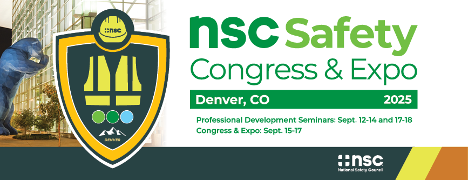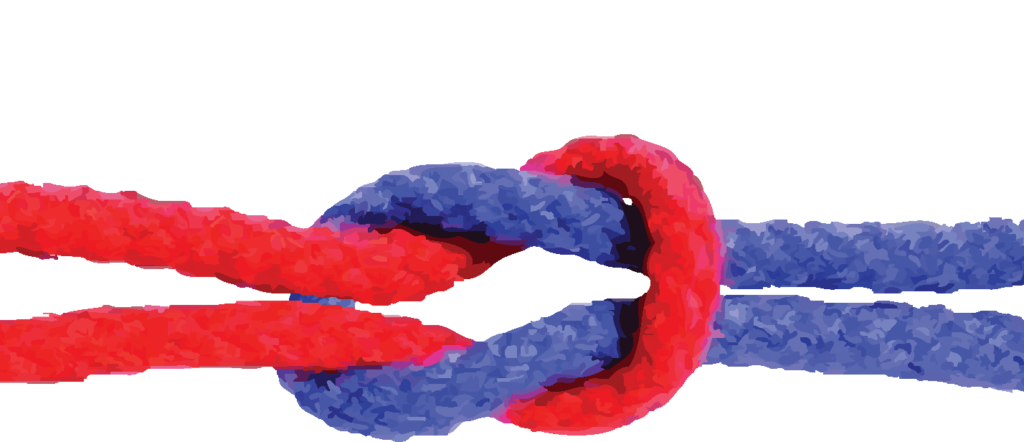Author - John McBride, SPHR, SHRM-SCP
How to proactively manage construction safety through pre-operational planning
Has anyone determined the reasons for disruptions, accidents, and/or losses, experienced at your organization’s jobsites? Why are workers getting hurt in spite of safety standards, programs, policies, procedures, training, and possibly everyone’s best efforts? What can be done to reduce losses, avoid accidents, control the cost of risk and improve the bottom line? These are good and pertinent questions since business is under increasing pressure to improve operational efficiency, people’s effectiveness as well as profitability.
Construction operations
Typically, in construction safety management is a separate function from that of operations. The foreman or superintendent is in charge of operations on site. They manage by planning, organizing, directing, staffing, and controlling the work. This person may be involved before the work is started, while the work being put in place and sometime after the work is completed. The project is driven by the schedule which is based on planned production, and kept on track by leadership and management, problem solving, communicating, expediting, coordinating, recovery planning, and risk management. This is a proactive forward-looking approach to management.
Planning is fundamental to construction operations and the cornerstone of tracking and managing production. To some extent every aspect of contracting involves some form of planning. It is through planning that the appropriate materials are secured, delivered, and installed. Planning enables all the trades to be able to work harmoniously on the site. Absent effective planning, all the diverse partners and suppliers, diverse functions, and activities would not come together efficiently to result in the timely final completed output.
Pre-operational planning is the review of production operations before the start of the construction process, project phases or tasks in order to identify and eliminate potential barriers to efficient, effective, timely, and safe performance of the work.
The goal of preplanning is to reduce or eliminate risk, remove barriers and solve potential problems so as to enable timely production, minimize disruption, increase efficiency, create a safe work environment, lower costs and strive to exceed partner expectations.
So, if accidents and injuries on your construction site continues to cause disruptions and losses despite all the traditional interventions, then it begs the question, can we apply the fundamentals of preoperational planning to worker safety and therefore minimize these undesirable outcomes? The answer is a resounding YES! Fundamentally, slack of safety, is an undesirable side effect of putting work in place. Since preplanning manages the process, it should be able to effectively deal with and potentially eliminate its undesirable (accidents) side effects.
A research study conducted in the 1980s by the Construction Industry Institute (CII) identified the single most effective tool contractors have to prevent accidents on their work sites as pre-project/pre-task planning. A follow-up study in the 1990s confirmed this again. Let’s look at the planning process and see how we may affectively integrate safety management into the contractor's preoperational planning practices.
Illustration: Nadezhda Kurbatova/ iStock / Getty Images Plus via Getty Images.
Safety management
There are many reasons why safety is managed separately from operations There are laws requiring businesses to purchase workers compensation insurance so as to provide funds to take care of injured workers. OSHA regulations have standards on how to deal with hazards on the job, by requiring inspections, workforce training, record keeping, etc. OSHA can also fine organization who fail to comply with these standards. All this requires special knowledge, oversight, management and control.
The safety manager is responsible for the workforce’s safety. He generally gets involved when the work is being put in place, and primarily interacts with workers during safety inspections which generally may be conducted monthly or possibly weekly, as well as during accident investigations. The safety manager is responsible for interfacing when OSHA visits and the worker compensation insurance carrier’s representative.
Companies’ accidents and losses impact their cost of risk and ultimately their potential competitiveness in a highly competitive industry. So, controlling losses in the safety area is a key objective of the company’s safety function. Since the common metric in safety is accidents based, improvement can be evaluated by comparing company losses to injury, illness, and fatality, records, as published by the Bureau of Labor Statistics. This, primarily is a reactive approach to management.
Injury risk control
Industries focus on the worker for resolution of its safety concerns which is driven by historic precedent. In the 1920s, H. W. Heinrich conducted a study of 75,000 accident reports and determined that 88 percent of the causes of those accidents resulted from the worker’s “unsafe acts”. In 1950 Heinrich published the “Domino Theory of accident causation” which graphically showed a sequence of events with the unsafe act causing the accident. In 1960s, F. E. Bird analyzed 1.7 million accidents representing over 3 billion hours worked. He found that 95 percent of the causes of those accidents resulted from “unsafe acts” by workers.
This focused industry’s approach to improving safety outcomes to their workforce. The underlying assumption is that the worker has complete access to all necessary information and have full autonomy while making a decision and therefore can stop taking or avoiding risks, which may lead to an accident. But what this assumption ignores is that the worker has very little control over operations, compared to management, since they plan, organize, staff, direct, and control construction operations.
So it becomes clear that supervision not only controls just about every planned activity on a construction site, but also has quite a bit of control over the worker. Supervision hires the worker, assigns the tasks, and oversees his/her activities. The supervisor can assess the workers knowledge, and capabilities to determine if they match the task demand. If there are deficiencies then provide training and support to the worker or assign them to another task. So, by this example, management can exercise quite a bit of control over the workers actions as well. Therefore, the solution to the incident/accident/loss problem resides elsewhere in the operation.
Accidents usually do not happen due to fate or intent on the worker’s part. They mostly happen because of ineffective processes, inadequate procedures, poor planning or lack of foresight. Therefore, we must get away from the predominantly worker-focused interventions common in the industry, and look into areas that the worker has little or no control over but are the underlying contributing causes of incidents and losses.
Integrating safety into pre-operational planning process
Construction work is put in place progressively by craftsmen based on plans devised by project staff. So, if a following trade encountered physical hazards, then it stands to reason that the preceding tradesmen created them as they put work in place, while following the plan devised by the project staff. Which begs the question of why didn’t the staff deal with such risk issue prior to the following trade commencing their work. To address hazards and risk holistically, it is most effective to have the project staff deal with worker safety simultaneously with the planning of the operational tasks.
This would not only be logical but also a much more efficient way to address and mitigate project risk. It is easier and more cost effective to address risk while planning than after the fact when work already physically exists and has to be modified. After the fact dealing with existing risk will disrupt work flow and make operations potentially take longer and possibly make it somewhat less efficient. Every one of these possible eventualities will have a time factor and will increase cost.
Having the safety manager function as a technical consultant to the people who manage operations, proactively involves safety and risk management throughout the planning organizing staffing, directing and controlling function of the project delivery process. This means that the safety manager has input during the preconstruction, construction, and any possible post construction activities. This approach ensures that safety and risk management are fully and continuously involved in all the construction related activities.
Conclusion
To address worksite safety holistically, safety management must be fully integrated into project operations and the project delivery process. This means making operational staff responsible for worker safety along with the management of other operational risks. This then requires a complete structural change to the safety function. Rather than operating from a reactive stance, looking for existing hazards and unsafe acts.
Safety takes on an active role by providing support and input to the project delivery process as well as construction operations through engaging in preconstruction as well as construction operational activities. Earnestly contributing to the preplanning activities in order to identify, evaluate, eliminate or mitigate potential risks. Providing construction assessment for task design as well as task demand in order to enable and enhance workforce performance.
Effective preplanning involves the review of planned operations before and during construction in order to identify and eliminate potential hazards and risk sources. The goal of preplanning is to identify risk during planning before workers are impacted by them while putting work in place. This includes modification of operational risks in order to improve performance, enhancement of productivity, as well as reduction of hazards, which will minimize disruption, increase efficiency, and lower costs; resulting in a win-win outcome all around.
Peter G. Furst, MBA, Registered Architect, CSP, ARM, REA, CRIS, CSI, is a consultant, author, motivational speaker, and university lecturer at UC Berkeley. He is the president of The Furst Group which is an Organizational, Operational & Human Performance Consultancy. He has over 20 years of experience consulting with a variety of firms, including architects, engineers, construction, service, retail, manufacturing and insurance organizations. He has guided organizational systems integration, aligning business and operational goals, enhanced management’s leadership and operational execution, utilizing Six Sigma, lean and balanced scorecard metrics optimizing human and business performance and reliability. Send questions and comments to peter.furst@gmail.com
as published
May 2023
VOL. 57 NO. 4






